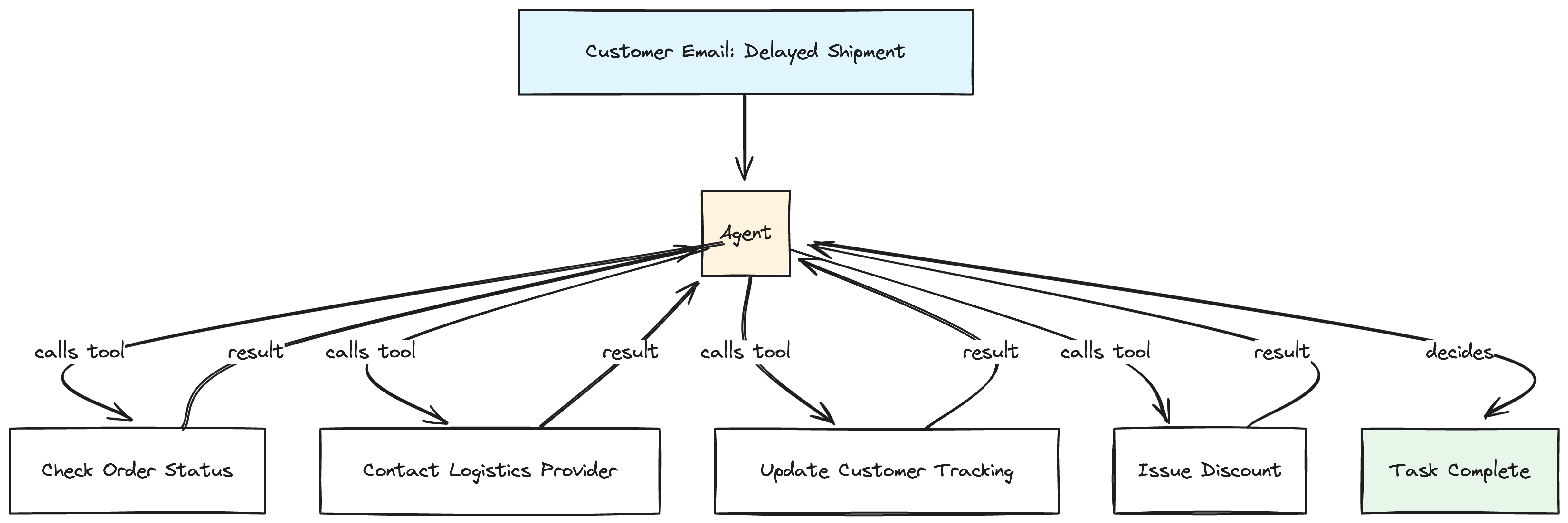AI Agents vs Workflows: Understanding the Autonomy Spectrum

If you’ve ever been in a meeting where someone confidently mentioned ‘agentic AI’ and everyone just nodded along—this is for you. A common point of confusion I see in enterprise AI is mixing up agents and workflows. AI, specifically large language models, can be used in a variety of ways. These systems range from very simple AI applications to highly complex autonomous agents and everything in between. In reality this is a spectrum—on one side we have no-autonomy AI workflows, and on the other side we have autonomous AI agents, with many variations in between.
What’s a Workflow
So what’s a workflow? A workflow is like an assembly line. We have a predefined set of steps to accomplish a goal. Workflows give the AI no autonomy to execute a task. At its simplest form, you give the AI a single task to execute, such as summarizing a document, and use that data downstream in some process. A slightly more complex workflow might involve asking the AI to categorize some text, then have different downstream actions based on the categorization. The common theme with workflows is that we are asking the AI to execute discrete tasks with an explicit input and output.
Example: Your legal team receives 100+ contracts weekly for review. A workflow automatically: (1) extracts key terms like payment schedules and liability caps, (2) compares them against your standard thresholds, (3) flags high-risk clauses, and (4) routes contracts to the appropriate reviewer based on risk level. Each step is predefined—the AI follows the exact same process every time, like an assembly line.

What’s an Agent
The other side of the autonomy spectrum are agents. If workflows are recipes, agents are like entire factories. You can give them more broad or undefined tasks and, given a set of tools, can take action and make decisions without human input. This is a fundamentally different paradigm than any technology we’ve seen before, which makes it especially exciting. Core to an effective agent is the set of tools we give it. Tools should be thought of as ways to give the agent the ability to gather context and take action within some bounds. Let’s say I need my agent to answer questions about my internal ticketing system. I would give it access to a tool that would allow it read-only queries to the ticketing system. While agents are highly complex and difficult to build, they represent an especially powerful way to automate many tasks within the enterprise.
Example: A customer emails about a delayed shipment. An agent independently: checks the order status, identifies a warehouse error, contacts the logistics provider for expedited shipping, updates the customer with new tracking information, and issues a 20% discount for the inconvenience—all without human intervention. The agent decided which actions to take based on the situation.

The good news is you don’t have to choose one or the other forever. Most companies start with workflows and gradually experiment with agents as they build confidence. Think of it as a journey, not a binary decision.
Where to start
Given the current hype cycle, it can be quite difficult to discern where to start. There are dozens of ways to approach this—you might start where ROI potential is highest or perhaps where you think adoption will be quickest. There is not a correct answer here, but the wrong answer is to do nothing. Business functions where AI adoption is occurring quickest are software engineering/development and customer service. These are areas where there are many great off-the-shelf tools to enable these functions. Also, just about any function that is highly text based (think lots of reading, writing, copy/paste) is ready for workflow automation. Regardless of the direction you choose, it’s important to get going now.
If all progress at the major AI labs ended today, we would have 5-10 years worth of work to extract full intelligence from the available models, but to realize their full value in your business will take time and will require growing an internal capacity. It’s best to get started today.